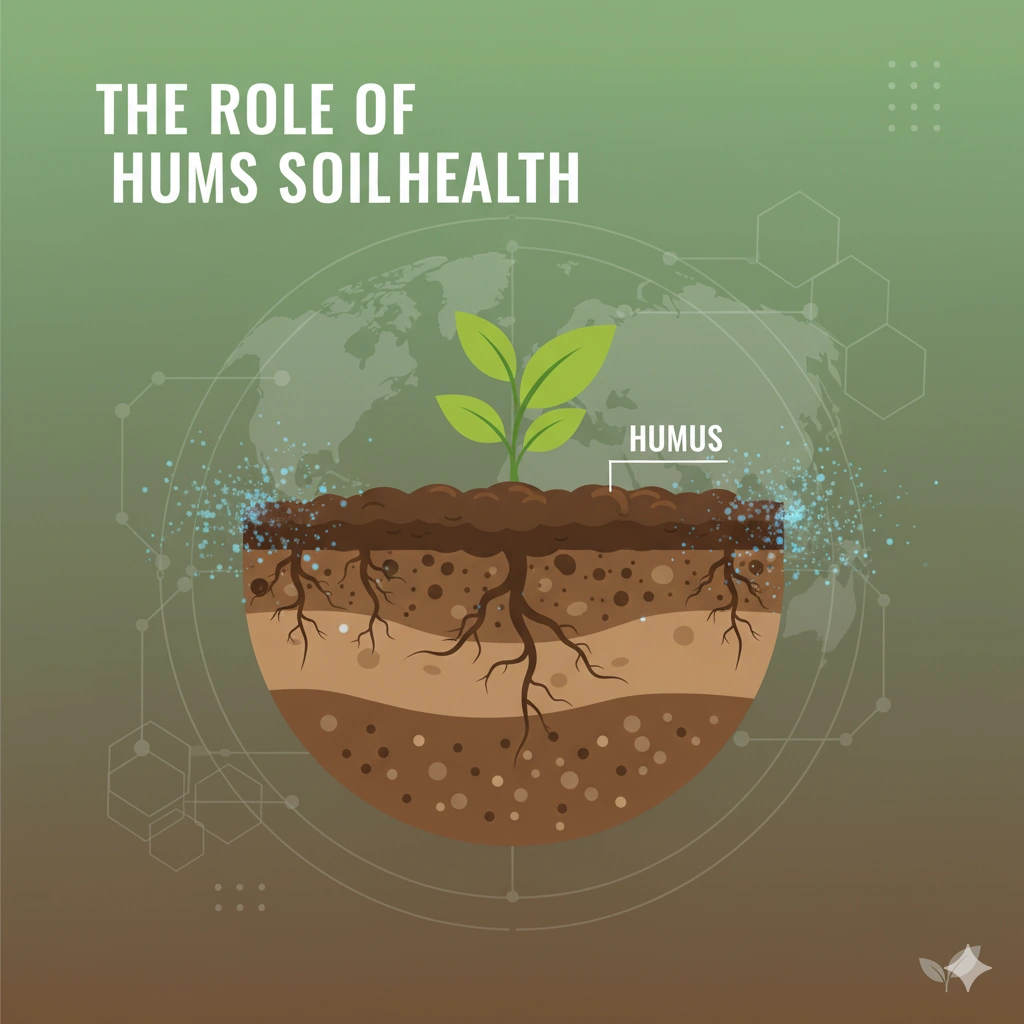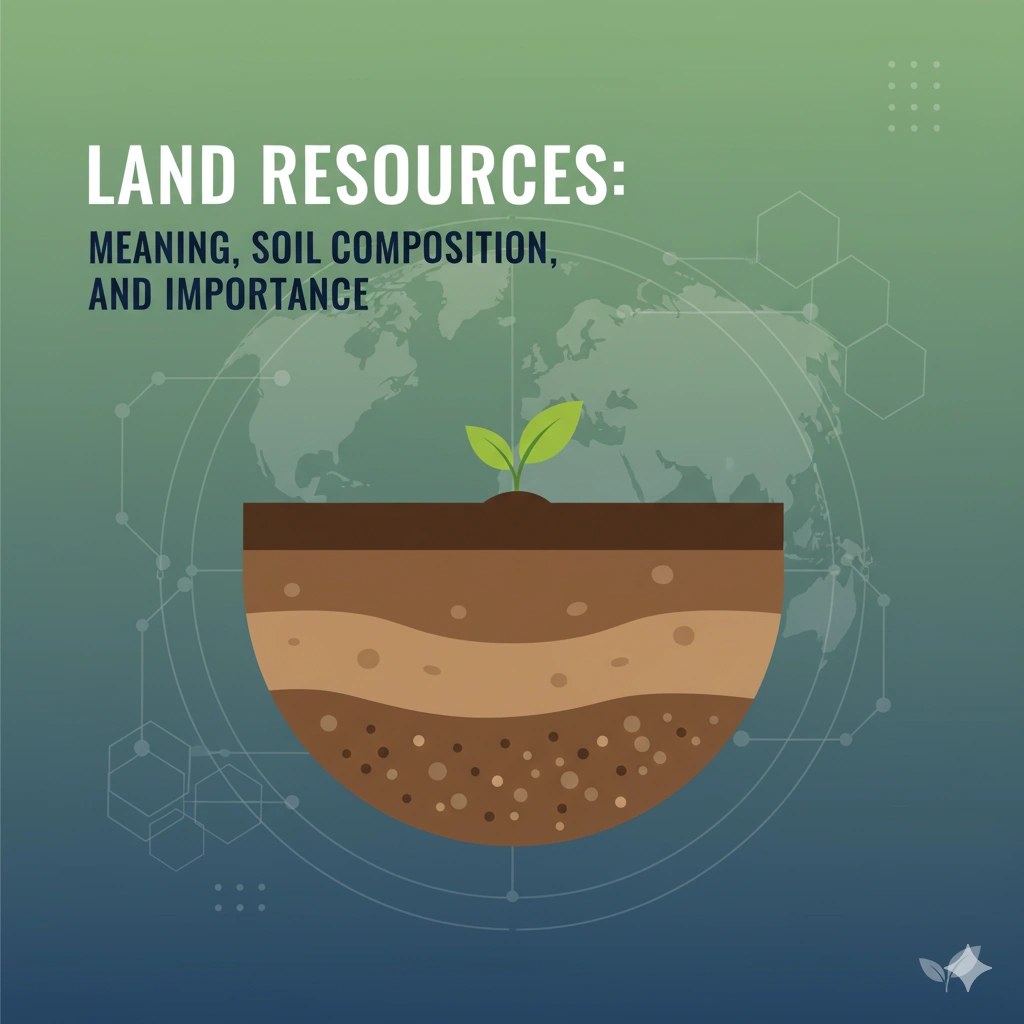Land Resources: Meaning, Soil Composition, and Importance
Land resources are among the most vital natural assets that sustain human life and biodiversity on Earth. They cover nearly one-fifth of the planet’s surface — about 13 billion hectares — and serve multiple purposes. On this stage of life, we build homes, grow food, raise animals, and preserve forests. Without land, neither civilizations nor ecosystems could exist. Interestingly, how we use this resource has a profound effect on our survival. Roughly one-third of land supports human settlements, industries, and infrastructure like roads and factories. Another one-third is covered by forests that act as Earth’s lungs, while the remaining part is dedicated to agriculture, grazing fields, and meadows.
What Exactly Is Soil and Why Is It Special?
At first glance, soil may look like simple dirt, but it is far more complex. It is a living, dynamic layer formed by the breakdown of rocks and the accumulation of organic matter over centuries. Scientists Buckman and Brady defined soil as a natural body that is constantly changing and capable of supporting plant growth. Its composition is fascinating: about 45% minerals, 5% organic matter, 25% water, and 25% air. These proportions create the balance needed for roots to breathe, absorb nutrients, and anchor firmly. Tiny pore spaces in soil act as storage pockets for water and air. The relationship between them is like a seesaw — when water content is high, air content decreases, and vice versa. This delicate balance makes the difference between fertile ground and barren land, especially when cultivating crops such as grow tomatoes.
The Hidden World of Soil Life
Soil is not lifeless; in fact, it is one of the busiest ecosystems on Earth. Invisible to the naked eye, it harbors bacteria, fungi, algae, and countless microorganisms that keep the soil fertile. These organisms recycle nutrients, break down organic matter, and even protect plants against diseases. The microflora includes autotrophic and heterotrophic bacteria. Nitrogen-fixing bacteria, for example, enrich the soil by converting atmospheric nitrogen into plant-usable forms. Fungi such as yeast and mushrooms decompose organic matter, while algae contribute oxygen and organic compounds. Alongside them, the microfauna — like protozoa and nematodes — play their role in nutrient cycling. The macrofauna includes earthworms, termites, mites, and snails. Earthworms, often called “farmers’ friends,” aerate the soil and mix organic material, making it more fertile.
Different Types of Soil Particles
Soil texture depends on the size and nature of its particles, which originate from the weathering of rocks. There are four main categories: gravel, sand, silt, and clay. Gravel consists of small stones used mainly in construction and road-making. Sand particles are coarse and porous, allowing air circulation but holding very little water. Silt particles are finer, often deposited by rivers, and relatively inert. Clay, on the other hand, is fine-grained, rich in nutrients, and excellent at retaining water. However, pure clay can harden into an impermeable mass, which makes it unsuitable for crops unless mixed with other components. The ideal farming soil is not one single particle type but rather a blend that balances porosity and water retention.
Loamy Soil: The Perfect Blend
Among all soil types, loamy soil is considered the best for cultivation. It contains sand, silt, and clay in balanced proportions. Clay makes up the least part, while silt and sand are present in nearly equal but larger amounts. This combination ensures that loam retains enough water for crops while allowing excess to drain away. Its pores promote root penetration and oxygen flow. Rich in nutrients, loamy soil is highly fertile and suitable for growing a wide variety of crops. Farmers often prefer it because it minimizes the risk of waterlogging yet prevents excessive dryness.
Soil Properties: Physical and Chemical
The quality of soil is influenced by both physical and chemical properties. Physically, factors such as porosity, water-holding capacity, and texture determine how well soil supports plants. Chemically, its fertility depends on mineral salts, organic matter, and the presence of elements like nitrogen, phosphorus, and potassium. External conditions also shape soil characteristics. For instance, climate affects the rate of organic matter decomposition, while topography influences erosion and water retention. Biological activity, from microbes to larger animals, further alters soil structure and fertility.
The Role of Humus in Soil Health

One of the most valuable components of fertile soil is humus — the dark, spongy material formed from partially decayed organic matter. Think of it as the soil’s savings account, storing essential nutrients for future use. Humus improves porosity, enhances water retention, and regulates soil temperature by absorbing heat. It also makes the soil granular, creating the perfect balance between aeration and moisture. Crops growing in humus-rich soil tend to be healthier and more resilient. Without humus, soil loses much of its fertility and becomes vulnerable to erosion.
Comparison of Soil Types
Here’s a simple table showing how different soil particles differ in properties and agricultural suitability:
| Soil Type | Particle Size | Water Holding Capacity | Nutrient Content | Uses in Agriculture |
|---|---|---|---|---|
| Gravel | Largest | Very Low | Poor | Construction, not farming |
| Sand | Large | Low | Low | Suitable for crops needing drainage (e.g., root vegetables) |
| Silt | Medium-fine | Moderate | Moderate | Often deposited in river valleys, moderate fertility |
| Clay | Very fine | High | High | Can be fertile but may cause waterlogging |
| Loam | Balanced mix | Ideal balance | High | Best for farming, supports most crops |
Why Land Resources Matter for the Future
The value of land resources goes beyond farming. Forests regulate the climate and maintain biodiversity, grasslands support livestock, and fertile soil secures food supplies. Mismanagement, however, threatens this delicate balance. Overuse, deforestation, and soil erosion degrade land and reduce productivity. As the global population grows, the pressure on land intensifies. Sustainable practices such as crop rotation, organic farming, and afforestation are essential to protect soil health and ensure future generations have access to fertile land.
Conclusion
Land resources are not just the ground beneath our feet — they are the backbone of human survival and ecological balance. From forests to fertile fields, they sustain life in countless ways. Among them, soil stands out as the lifeline of agriculture, enriched by minerals, humus, and living organisms. Protecting land from degradation is not a luxury but a responsibility. By valuing and wisely managing soil, we can secure food, forests, and a sustainable future.
FAQs
1. What are land resources in simple terms?
Land resources are the natural areas of Earth’s surface that humans use for farming, housing, forests, industries, and grazing.
2. Which soil is best for crops?
Loamy soil is considered the best for agriculture because it retains water, drains well, and is rich in nutrients.
3. What is humus and why is it important?
Humus is decomposed organic matter in soil that improves fertility, water retention, and aeration. It acts like a natural fertilizer.
4. How do soil organisms help farming?
Organisms like earthworms, bacteria, and fungi recycle nutrients, aerate the soil, and make it more fertile for crops.
5. What threatens land resources today?
Deforestation, overuse of land, soil erosion, and unsustainable farming practices are the biggest threats to land resources.







